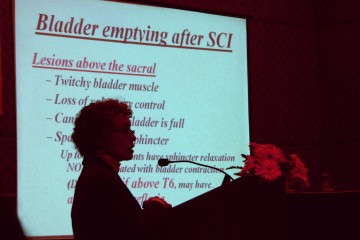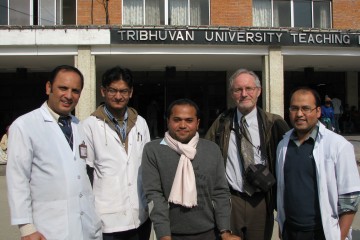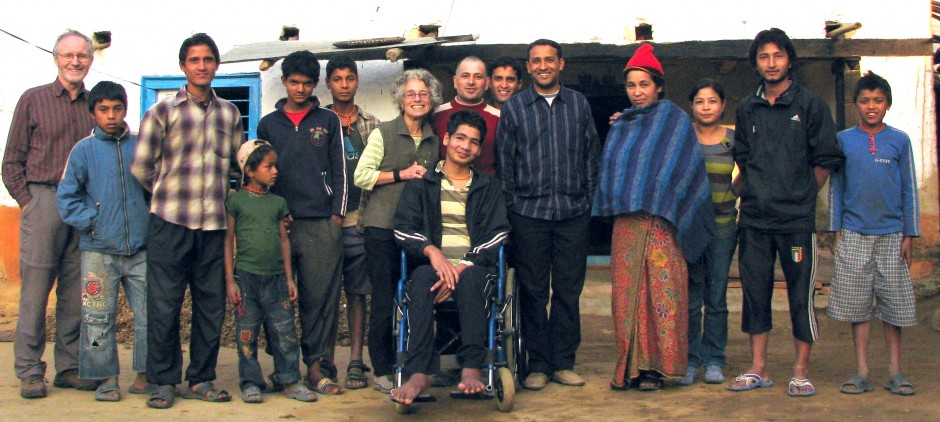2009
ASCoN meeting Nov 20-22 2009

Dr Claire Weeks describes the urological consequences of spinal cord injury at the ASCoN meeting in Kathmandu
This was the occasion for our first visit to Kathmandu to work with the staff of the Spinal Injury Rehabilitation Centre (SIRC). SIRC hosted the annual meeting of the Asian Spinal Cord Network (ASCoN), and we were among the faculty, presenting talks on several aspects of spinal cord injury. We spent three weeks in Kathmandu and SIRC, learning how the centre functions, and getting to know Dr Raju and teaching him. We also met Dr Prakash who was attending the ASCoN meeting, and, through him, Dr Peter Wing was able to present at the regular surgery rounds at Kathmandu Model Hospital, where Prakash was then working. We were very impressed by both young men, their keen desire to learn, their ability to absorb teaching apparently effortlessly, their dedication to their work and their integrity. For more information about these two, click here.

Spine surgeon Dr Dinesh Kafle (left) with Dr Raju Dhakal (centre), Dr Peter Wing and orthopaedic residents at TUTH
Peter introduced Dr Raju to the staff of some of the acute spine care units in Kathmandu (left). Claire made a number of home visits with SIRC staff during this visit, and worked with the social worker to improve follow-up services.
Home Visits and what can be learned from them
We joined SIRC staff in making home visits to discharged patients, which gave us a clearer understanding of the problems and challenges facing newly-injured people (see the video on the links page). Among other things, these visits clearly showed how great the need is to find a greater choice of vocational options for people with SCI. On the other hand, the visits demonstrated the ingenuity and flexibility of former patients that allowed them, despite ongoing difficulties, to reintegrate into their families at home and their communities.
To reach this house, we drove five hours over a four-wheel drive road then hiked up a mountain trail about two hours. The young man had to be carried home by his family.
